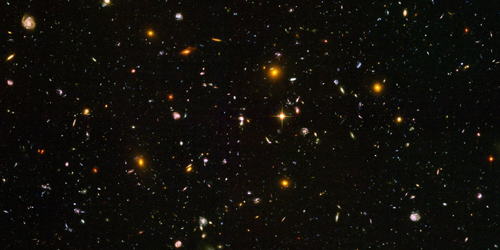Observing the Cosmic Dawn with Hydrogen Deuteride
Information about the Universe’s beginning is hard to glean. But researchers have gained some details of this period by monitoring the redshift of hydrogen’s “21-cm line.” This spectral line is created by a change in the relative spin orientations of the protons and electrons in neutral hydrogen atoms, which became abundant around 370,000 years after the Big Bang. Observing the early Universe via the 21-cm line is tricky, however, as its faint signal is masked by more intense radiation from younger astronomical objects and more recent events. Now Patrick Breysse of New York University, Simon Foreman of the Perimeter Institute, Canada, and colleagues have explored the possibility of using one of the emission lines of hydrogen deuteride to improve these observations [1]. The team says that monitoring two emission lines in different parts of the electromagnetic spectrum could make it easier to remove foregrounds that currently mask early-Universe signals.
In their exploratory study, the team predicts the brightness of the 112-µm emission line of hydrogen deuteride molecules during different periods of cosmic history. They find a bright 112-µm signal for the “Epoch of Reionization”—when the light of the first stars ionized the Universe’s intergalactic gas. The researchers say that such a signal could be detectable with hypothetical upgrades to the Fred Young Submillimeter Telescope. They also find a fainter 112-µm signal for an earlier period—the “cosmic dawn”—whose detection would require a new instrument.
Hydrogen and deuterium only combine in the cold dense gas clouds that produce stars, so measurements of the 112-µm line could provide information about how and when the Universe’s first stars formed. “A hydrogen-deuteride survey may offer one of the clearest windows into the Universe’s illumination,” Breysse says.
–Katherine Wright
Katherine Wright is the Deputy Editor of Physics Magazine.
References
- P. C. Breysse et al., “Mapping the Universe in hydrogen deuteride,” Phys. Rev. D 105, 083009 (2022).




